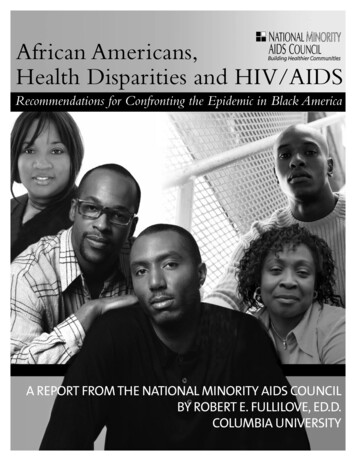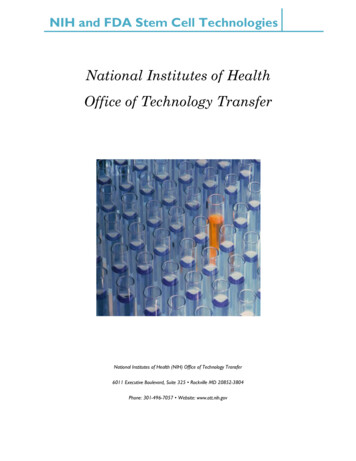
Transcription
NIH and FDA Stem Cell TechnologiesNational Institutes of HealthOffice of Technology TransferNational Institutes of Health (NIH) Office of Technology Transfer6011 Executive Boulevard, Suite 325 Rockville MD 20852-3804Phone: 301-496-7057 Website: www.ott.nih.gov
INTRODUCTIONNIH has an extensive intellectual property portfolio of early-stage technologies1 and also investssubstantially in their development. Roughly 10 percent of the annual NIH budget is dedicated tointramural research and development activities that results in inventions in the areas of medical devices,software, vaccines, diagnostics, therapeutics, and reagents. Commercial partners are needed to ensurethat the long hours at the lab bench and the public investment in the development of these inventionspay off in the end in marketed products.NIH believes that innovative companies can play a significant role in the future development of leadingedge research. While the increasingly consolidated pharmaceutical industry remains a steady customerof research reagents and clinical collaborations with NIH, the more exciting therapeutic developmentsare increasingly coming from NIH licenses signed with small and medium-sized life science companiesearly in their growth phase.NIH is sensitive to the needs of small companies and tries to provide license agreements that facilitatenew areas of product development based upon NIH research to attract and help companies in the earlystages of their development. Of particular note for venture-backed firms is that companies do not giveup equity or management control nor are their future development or marketing rights compromisedby signing NIH license agreements. Finally, once the product is in development, NIH has the capabilityto assist with clinical trials, conduct research collaborations, and eventually purchase theproduct as a customer.We have collected some stem cell technologies your company might be interested in for furtherdiscussion with our licensing managers.Once you have picked the technology of interest, we urge you to apply for a License. A copy of theLicense Application template can be found at the NIH OTT website at:http://www.ott.nih.gov/agreements1The NIH Office of Technology Transfer cannot guarantee that the listed technologies are still availablefor licensing. Please contact the Licensing and Patenting Manager (listed under each technology) for thecurrent status and for other complementary technologies.
Title PageUse of Adult and Embryonic Stem CellsEngineer biological pacemakers[abs]Methods and materials for controlling stem cell and cancer cell proliferation and differentiationMethod for promoting stem cell proliferation and survival[abs][abs]Methods for promoting stem cell proliferation and survival[abs]Differentiation of human embryonic stem cells into dopaminergic nerve cellsZscan4, a therapeutic target for cancer, regenerative medicine and aging[abs][abs]Genetically modified stem cells for personalized therapy of single gene disorders[abs]Cancer Stem CellsIdentification of cancer stem cells[abs]Methods for determining hepatocellular carcinoma subtype and detecting hepatic cancer stem cells[abs]Hematopoietic CellsMethods of mobilizing pluripotent hematopoietic stem cells and accelerating leukocyte reconstitution with IL-7[abs]Vasostatin as marrow protectant[abs]Stem Cells-Dental Cosmetic SurgeryAdult human dental pulp stem cells in vitro and in vivoPostnatal stem cells an uses thereof[abs][abs]Multi-potent postnatal stem cells from human periodontal ligament and uses thereofOthersSpoc Cell: Stem cells that transform to beating cardiomyocytesTendon Stem Cells[abs][abs][abs]Research Materials/DevicesA Nurr1-Knockout mouse model for Parkinson’s disease and stem cell differentiationNUP98-HOXD13 transgenic mice[abs][abs]4G10, a monoclonal antibody against the chemokine receptor CXCR4[abs]Monoclonal antibody (MP804) that specifically binds stem cells and its useC57BL/6J embryonic stem cell lines generated using serum-free mediaStem cell culture, monitoring and storage system[abs][abs][abs]Mouse model and derived cells that hypersecrete leukemia inhibitory factor (LIF)[abs]
Engineered Biological PacemakersTechnology Available for LicensingA common symptom of many heart diseases is an abnormal heart rhythm orarrhythmias. Arrhythmias affect more than 3 million Americans and account for morethan 400,000 deaths a year. This technology consists of biological pacemakersengineered to generate normal heart rhythm. This technology discloses the method formaking biological pacemakers that are cardiac-like cells derived from embryonic stemcells or mesenchymal stem cells thatnaturally integrate into the heart andPotential Commercial Applicationsgenerate normal rhythmic functions.Development StageIn vitro proof of concept data areavailable. Treat heart disease characterized byarrhythmia Replace implantable cardiac pacemakersIntellectual PropertyLicensing Contact:Fatima Sayyid, MHPMSr. Licensing & Patenting ManagerOffice of Technology TransferNational Institutes of HealthFatima.Sayyid@nig.hhs.govPhone: 301.435.4521HHS Reference No. E-134-2009/0PCT Application No.PCT/US2010/035823, filed 21 May 2010Inventor(s)Victor A Maltsev (NIA)Competitive Advantages Not externally powered like implantablepacemakersPublication Lower risk of infection Decreased potential for interference fromVA Maltsev et al. (2009) [PubMed abs] Has full autonomic rate modulationother devicesCollaborative ResearchOpportunity AvailableThe National Institute on Aging, Cellular Biophysics Section, is seeking statements ofcapability or interest from parties interested in collaborative research to furtherdevelop, evaluate, or commercialize this technology. Please contact Vio Conley at 301496-0477 or conleyv@mail.nih.gov for more information.NIH OTT347 products including 22 FDA-approved drugs andbiologics use OTT licensed technologies!Science. Ideas. Breakthroughs.
Methods and Materials for Controlling Stem Cell andCancer Cell Proliferation and DifferentiationTechnology Available for LicensingThere is tremendous interest in the use of stem cells to promote regenerative and celltransplantation therapies. This technology discloses the gene and novel protein thatextends the proliferative capacity of stem cells. This protein, nucleostemin, regulatesstem cell survival and cell cycle and interacts with p53, a well known regulator of cellcycle and apoptosis. Nucleostemin, and its related gene, may be a crucial target forincreasing stem cell number, improvingthe use of stem cells in regenerativePotential Commercial Applicationsmedicine and/or studying the Regenerative medicineproliferation of cancer cells.Development StageLicensing Contact:Jaime Greene, MSLicensing and Patenting ManagerOffice of Technology TransferNational Institutes of Healthgreenejaime@mail.nih.govPhone: 301.435.5559In vitro proof of concept data areavailable. Slow / prevent the decrease in stem cellproliferation associated with aging(Cognitive implications) Develop assays for retarding theproliferation of cancer cellsIntellectual PropertyHHS Reference No. E-001-2003/0HHS Reference No. E-019-2003/0HHS Reference No. E-001-2003/1Inventor(s)Robert Tsai and Ronald D McKay(NINDS)PublicationTsai RY et al. (2005) [PubMed abs]Tsai RY et al. (2002) [PubMed abs]NIH OTT347 products including 22 FDA-approved drugs andbiologics use OTT licensed technologies!Science. Ideas. Breakthroughs.Competitive Advantages Novel protein that can be used to developscreening assays for drugs impacting stemcell proliferation and differentiation
Methodfor Promoting Stem Cell Proliferation and Survival[Type text]Technology Available for LicensingThis technology describes a method to promote stem cell survival and proliferation bymanipulating the phosphorylation state of Stat3 protein. STAT3 is involved inproliferation and cell growth and phosphorylation at serine 727 has been shown topartially regulate STAT3 activation and function. In addition, constitutively activatedSTAT3 is associated with cancerous cells. This technology has been shown to enhancesurvival and proliferation in stem cell cultures in vitro, and also in neuronal precursorcells in vivo through the regulation of STAT3. Disclosed are methods of using variousligands and growth factors to promote neural stem cell survival and proliferation. Alsodisclosed is a method for determiningprognosis of cancer patients.Development StageIn vitro and in vivo proof of concept dataare available.Intellectual PropertyLicensing Contact:Fatima Sayyid, MHPMSr. Licensing & Patenting ManagerOffice of Technology TransferNational Institutes of HealthFatima.Sayyid@nig.hhs.govPhone: 301.435.4521HHS Reference No. E-239-2005/0US Application No. 60/715,935 filed 07Sep 2006CA Application No. 2621161 filed 07Sep 2006US Application No. 12/066,075 filed 06 Mar 2008Potential Commercial Applications Stem cell therapies for the treatment ofneurodegenerative diseases, stroke, spinalcord injury and ALS Develop screening assays for agents thatpromote proliferation of stem cells Develop screening assays for agents thatinhibit proliferation of cancer cells Diagnostic assay for cancerous cellsInventor(s)Ronald D McKay and AndreasAndroutsellis-Theotokis (NINDS)PublicationA Androutsellis-Theotokis et al. (2006)[PubMed abs]Competitive Advantages Increase generation of stem cells in vitro Determine cancer patients likely to respondto particular treatments based on STAT3phosphorylation profileCollaborative ResearchOpportunity AvailableThe National Institute of Neurological Disorders and Stroke, Laboratory of MolecularBiology, is seeking statements of capability or interest from parties interested incollaborative research to further develop, evaluate, or commercialize this technology.Please contact Martha Lubet at 301/435-3120 or lubetm@mail.nih.gov.NIH OTT347 products including 22 FDA-approved drugs andbiologics use OTT licensed technologies!Science. Ideas. Breakthroughs.
Methods for Promoting Stem Cell Proliferation and SurvivalTechnology Available for LicensingRegenerative medicine has the potential to treat numerous neurodegenerative diseasesand spinal cord injury. This technology consists of a method to activate the endogenousneural stem cells to promote their survival and yield using angiopoietin-2 and a cocktailof ligands and growth factors. Inventors have used this method to stimulate behavioralrecovery in a model of Parkinson’s disease in vivo and have shown that this method isapplicable to a variety of stem cell types.Development StageIn vitro and in vivo proof of concept dataare available.Intellectual PropertyLicensing Contact:Fatima Sayyid, MHPMSr. Licensing & Patenting ManagerOffice of Technology TransferNational Institutes of HealthFatima.Sayyid@nig.hhs.govPhone: 301.435.4521HHS Reference No. E-182-2007/0US Application No. 12/673,576 filed 15Feb 2010Inventor(s)Andreas Androutsellis-Theotokisand Ronald D McKay (NINDS)Potential Commercial Applications Stem cell therapies for the treatment ofneurodegenerative diseases, stroke, spinalcord injury and ALS Develop screening assays for agents thatpromote proliferation of stem cells Develop screening assays for agents thatinhibit proliferation of cancer cells Diagnostic assay for cancerous cellsPublicationA Androutsellis-Theotokis et al. (2006)[PubMed abs]Collaborative ResearchOpportunity AvailableCompetitive Advantages Develop culturing methods for optimaldevelopment of stem cells for regenerativetherapiesThe National Institute of NeurologicalDisorders and Stroke is seekingstatements of capability or interest fromparties interested in collaborative research to further develop, evaluate, orcommercialize agents with activity on proliferation and/or differentiation of stem cells.Please contact Laurie Arrants at 301-435-3112 or ArrantsL@ninds.nih.gov or MarthaLubet at 301-435-3120 or lubetm@mail.nih.gov for more informationNIH OTT347 products including 22 FDA-approved drugs andbiologics use OTT licensed technologies!Science. Ideas. Breakthroughs.
Differentiation of Human Embryonic Stem Cells intoDopaminergic Nerve CellsTechnology Available for LicensingTransplantation of fetal dopaminergic neurons in brains of Parkinson’s disease patientshas shown clinical promise. Currently, 3-5 embryos are needed to obtain enoughdopaminergic tissue for cell transplantation. This invention describes a novel method ofdifferentiating human embryonic stem cells into dopaminergic nerve cells. Thistechnology offers an alternative source of dopaminergic cells that are applicable toclinical dopaminergic transplantation studies and require less starting materials.Development StageIn vitro proof of concept data areavailable.Intellectual PropertyLicensing Contact:Jaime Greene, MSLicensing and Patenting ManagerOffice of Technology TransferNational Institutes of Healthgreenejaime@mail.nih.govPhone: 301.435.5559HHS Reference No. E-176-2008/0PCT Application No.PCT/US2009/065007 filed 18 Nov 2009Potential Commercial Applications Clinical transplantation of dopaminergictissue Human dopaminergic cell lines forscreening assays for dopamine-relatedneurological disordersInventor(s)William Freed and Tandis Vazin (NIDA)PublicationCarpenter M et al. (2006) [PubMed abs]Collaborative ResearchOpportunity AvailableCompetitive Advantages Large and reliable source of dopaminergiccells Human embryonic stem cells grow inculture indefinitely and can differentiateinto a variety of cell typesCan be used for clinical studiesThe National Institute on Drug Abuse,Development and Plasticity Section, isseeking statements of capability orinterest from parties interested incollaborative research to furtherdevelop, evaluate, or commercialize this technology. Please contact Vio Conley, M.S. at301-496-0477 or cconleyv@mail.nih.govfor more information.NIH OTT347 products including 22 FDA-approved drugs andbiologics use OTT licensed technologies!Science. Ideas. Breakthroughs.
Zscan4, a Therapeutic Target for Cancer, RegenerativeMedicine and AgingTechnology Available for LicensingTelomeres are regions of the chromosome that protect DNA from being degradedduring cell division. As cells divide the telomere region becomes shorter. Shorttelomere regions are associated with cancer cells and with aging. This technologydescribes a method for targeting Zscan4, a gene that regulates telomere length andsubsequently regulate genomic stability. Increasing telomere length and genome stabilityof embryonic stem cells may be critical for therapies in regenerative medicine, whiledecreasing telomere length may play a role in developing treatments for cancers.Development StageIn vitro and in vivo proof of concept dataare available.Intellectual PropertyLicensing Contact:Tara Kirby, Ph.D.Sr. Licensing & Patenting ManagerOffice of Technology TransferNational Institutes of HealthTk200h@nih.govPhone: 301.435.4426HHS Reference No. E-088-2007/1US Application No. 12/529,004 filed 27Aug 2009Potential Commercial Applications Development of therapeutics for cancertreatment, regenerative medicine, and agerelated diseases.Inventor(s)Minoru S Ko and Michal Zalzman (NIA)PublicationZalzman M et al. (2010) [PubMed abs]Falco G et al. (2007) [PubMed abs]Collaborative ResearchOpportunity AvailableCompetitive Advantages Increase genomic stability of stem cells;increase number of divisions withoutchanges in genetic materialThe National Institute on Aging, Laboratory of Genetics, is seeking statements ofcapability or interest from parties interested in collaborative research to furtherdevelop, evaluate, or commercialize this technology. Please contact Nicole Guyton,Ph.D. at 301-435-3101 or darackn@mail.nih.gov for more information.NIH OTT347 products including 22 FDA-approved drugs andbiologics use OTT licensed technologies!Science. Ideas. Breakthroughs.
Genetically Modified Stem Cells for Personalized Therapy ofSingle Gene DisordersTechnology Available for LicensingLicensing Contact:Fatima Sayyid, MHPMSr. Licensing & Patenting ManagerOffice of Technology TransferNational Institutes of HealthFatima.Sayyid@nig.hhs.govPhone: 301.435.4521There are over 10,000 human diseases caused by defects in a single gene, whichcollectively affects 1% of the population. Some of these diseases are associated with aninflammation response that mobilizes mesenchymal stem cells to the site of damage.This technology discloses methods for cultivating, genetically modifying, checking,selecting and reintroducing mechenchymal stem cells taken from the patient to treatsingle gene disorders. This technology works by using RNA interference to prevent thetranscription of the defected gene and inflammation responses to target the geneticallymodified mesenchymal stem cells to damaged areas.Development StageIn vitro proof of concept data areavailable.Potential Commercial Applications Therapies for single gene disordersIntellectual PropertyHHS Reference No. E-171-2008/0PCT Application No.PCT/US2010/045128 filed Aug 2010Inventor(s)Wilfried M Briest and Mark I Talan (NIA)NIH OTT347 products including 22 FDA-approved drugs andbiologics use OTT licensed technologies!Science. Ideas. Breakthroughs.Competitive Advantages Personalized medicine (specific treatment) Isolated from patient (no graft-to-hostdisease) Therapeutic cells physiologically recruited tosite of damage
Identification of Cancer Stem CellsTechnology Available for LicensingAsymmetrical division allows stem cells to limit the accumulation of DNA replicationerrors that can lead to genetic mutations. This technology discloses a method fordetecting, isolating, and purifying stem cells via their asymmetrical properties in cancers.Cancer stem cells are thought to be responsible for cancer initiation, maintenance, andtherapeutic failure. The isolation of cancer stem cells divulged in this technology hasshown superior tumor initiating potential in vivo. Furthermore, this technologyencompasses a means by which the extracellular environment regulates the potential ofthese cancer stem cells to self-renew.Development StageIn vitro proof of concept data areavailable.Intellectual PropertyLicensing Contact:Betty Tong, Ph.D.Sr. Licensing & Patenting ManagerOffice of Technology TransferNational Institutes of Healthtongb@mail.nih.govPhone: 301.594.6565HHS Reference No. E-122-2010/0US Application No. 61/342,642 filed 16Apr 2010Potential Commercial Applications Develop new cancer therapeutics Develop cancer cell lines for screeningassaysInventor(s)Itzhak Avital, Honwu Xin, and Danielle MHari (NCI)Competitive AdvantagesCollaborative ResearchOpportunity Available Pure selection of tumor-promoting stemcellsThe Center for Cancer Research,Surgery Branch, National CancerInstitute, is seeking statements of capability or interest from parties interested incollaborative research to further develop, evaluate, or commercialize our uniquemethod for isolating cancer stem cells. We are seeking interested parties who would beinterested in collaboration with the goal of developing cancer stem cell cell-lines forpersonalized targeted therapies, drug testing and finding novel targets for cancertreatments. In addition, we would like to collaborate with parties interested indeveloping normal (not cancer) adult tissue stem-cell cell-lines for adult tissueregeneration such as Parkinson's disease, liver failure, Alzheimer, etc. Please contactJohn Hewes, Ph.D. at 301-435-3121 or hewesj@mail.nih.gov for more information. Clickhere to view the NCI collaborative opportunity announcement.NIH OTT347 products including 22 FDA-approved drugs andbiologics use OTT licensed technologies!Science. Ideas. Breakthroughs.
Methods for Determining Hepatocellular CarcinomaSubtype and Detecting Hepatic Cancer Stem CellsTechnology Available for LicensingThe most common form of liver cancer, Hepatocellular carcinoma (HCC), is the thirdleading cause of cancer death worldwide. HCC originates from both adult hepatocytes(liver cells) and liver stem cells. Prognosis and treatment of HCC is hampered by theinability to indentify the cancerous cells. This invention disclosed methods and use ofmicroRNAs (miR-181 family) found to be associated with liver stem cells and poorprognosis of HCC patients to identify these cancerous cells. These microRNAs areinvolved in the Wnt-beta-catenin signaling pathway, a critical pathway for themaintenance of stem cell function. Thus, this miR-181 family of microRNAs can be usedin the detection of liver cancer stem cells, stratification of patience most-likely to showpositive treatment results, and devisingtherapeutic treatments of HCC arisingfrom liver stem cells.Potential Commercial ApplicationsDevelopment StageIn vitro proof of concept data areavailable.Intellectual PropertyLicensing Contact:Jennifer WongSr. Licensing & Patenting ManagerOffice of Technology TransferNational Institutes of Healthwongje@mail.nih.govPhone: 301.435.4633 Biomarker to profile clinical patients basedon miRNA profile Screening assays to detect inhibitors ofmiR-181 function Increase proliferation and maintenance ofliver stem/progenitor cells (miR-181 as anprotagonist)HHS, Reference No. E-215-2007/0PCT, Application No.PCT/US2008/007196 filed 09 Jun 2008US, Application No. 12/663,586 filed 21 Apr 2010Inventor(s)Xin W Wang (NCI), Junfang Ji (NCI),Taro Yamashita (NCI) and Carlo MCroce (Ohio State University)PublicationCompetitive Advantages HCC screening assay prior to treatmenttrials Devised personalized therapeutic strategiesbased on miR-181 profileWang B et al. (2010) [PubMed abs]Ji J et al. (2009) [PubMed abs]Garzon R et al. (2006) [PubMed abs]Collaborative Research Opportunity AvailableThe National Cancer Institute, Laboratory of Human Carcinogenesis, is seekingstatements of capability or interest from parties interested in collaborative research tofurther develop, evaluate, or commercialize this technology. Please contact John D.Hewes, Ph.D. at 301-435-3121 or hewesj@mail.nih.gov for more information.NIH OTT347 products including 22 FDA-approved drugs andbiologics use OTT licensed technologies!Science. Ideas. Breakthroughs.
Method of Mobilizing Pluripotent Hematopoietic Stem Cellsand Accelerating Leukocyte Reconstitution with IL-7Technology Available for LicensingHematopoietic stem cells are pluripotent and not yet committed to Erythroid (redblood cells), Lymphocytes (T-cells and B-cells) or Myeloid (leukocytes; white bloodcells) lineages. Therefore, hematopoietic stem cells can be used in transplantationstudies to re-populate recipient’s hematopoietic stem cells and immune cells. Thisinvention discloses a method for stimulating hematopoiesis, increasing hematopoieticstem cell number, and isolating cellular factors promoting hematopoiesis as means ofdeveloping therapeutic strategies and/or agents to be used with treatments ofimmunodeficiency disorders.Development StageIn vitro and in vivo proof of concept dataare available.Intellectual PropertyLicensing Contact:Surekha Vathyam, Ph.D.Licensing & Patenting ManagerOffice of Technology TransferNational Institutes of Healthvathyams@mail.nih.govPhone: 301.435.4076HHS Reference No. E-139-1994/0US Patent No. 5,637,323 issued 10 Jun1997HHS Reference No. E-139-1994/0Potential Commercial Applications Screening assays for hematopoiesis Treating immunodeficiency diseases Increasing hematopoietic stem cellsInventor(s)Robert H Wiltrout, Kris Grzegorzewski,and Francis W Ruscetti (NCI)PublicationKL Komschlies et al. (1995) [PubMed abs]OC Boerman et al. (1995) [PubMed abs]KJ Grzegorzewski et al. (1995) [PubMed abs]NIH OTT347 products including 22 FDA-approved drugs andbiologics use OTT licensed technologies!Science. Ideas. Breakthroughs.Competitive Advantages Improved engraftment of transplants Minimized toxicity from chemotherapyand/or radiation treatment Increased efficiency of stem cellprocurement
Vasostatin as Marrow ProtectantTechnology Available for LicensingThe treatment of various cancers utilizes chemotherapy and/or irradiation. Anunwelcomed side effect of chemotherapeutic agents and radiation is the death ofnoncancerous cells, such as peripheral blood cells and bone marrow stem cells. Thisinvention embodies the use of vasostatin, a peptide shown to reduce tumorigenesis andinhibit angiogenesis, as a stimulatory agent for the proliferation/survival of hematopoieticcells (bone marrow stem cells). Also disclosed is a method for protecting hematopoieticcells from chemotherapeutic agents and radiation.Development StageIn vitro proof of concept data areavailable.Intellectual PropertyLicensing Contact:Whitney Hastings, Ph.D.Licensing & Patenting ManagerOffice of Technology TransferNational Institutes of Healthhastingw@mail.nih.govPhone: 301.451.7337HHS Reference No. E-230-2000/0US Patent No. 6,596,690 issued 22 Jul2003HHS Reference No. E-230-2000/0US Patent No. 7,432,236 issued 07 Oct 2008US Application No. 12/198,810 26 Aug 2008Potential Commercial Applications Improved cancer therapeutics Treatments towards angiogenesis-relateddiseases (cardiovascular disease, stroke,diabetic ulcers, wound healing, etc.)Inventor(s)Giovanna Tosato, Lei Yao, and Sandra EPike (NCI)PublicationHuegel R et al. (2007) [PubMed abs]Yao L et al. (2002) [PubMed abs]Pike SE et al. (1999) [PubMed abs]NIH OTT347 products including 22 FDA-approved drugs andbiologics use OTT licensed technologies!Science. Ideas. Breakthroughs.Competitive Advantages Improved proliferation/survival ofhematopoietic stem cells
Adult Human Dental Pulp Stem Cells in vitro and in vivoTechnology Available for LicensingTooth loss due to injury and/or various diseases affecting the gum line area or the jaw istraditionally replaced with dentures. This invention discloses a novel source of stemcells, dental pulp, and methods of using dental pulp stem cells to recreate an individual’stooth. This invention has the possibility of reconstructing a complete set of teeth thatcan be grown within a mouth and fixed to the gum line area; serving as a replacement todetachable dentures.Development StageIn vitro and in vivo proof of concept dataare available.Intellectual PropertyLicensing Contact:Fatima Sayyid, MHPMSr. Licensing & Patenting ManagerOffice of Technology TransferNational Institutes of HealthFatima.Sayyid@nig.hhs.govPhone: 301.435.4521Potential Commercial Applications Dental cosmetic surgeryHHS Reference No. E-233-2000/0US Patent No. 7,052,907 issued 30 May2006PCT Application No. PCT/US01/23053 filed 23 Jul 2001Inventor(s)Songtao Shi, Stan Gronthos and PamelaG. Robey (NIDCR)PublicationS. Gronthos et al. (2002) [PubMed abs]S. Gronthos et al. (2000) [PubMed abs]NIH OTT347 products including 22 FDA-approved drugs andbiologics use OTT licensed technologies!Science. Ideas. Breakthroughs.Competitive Advantages Personalized treatment Can use dental pulp stem cells isolatedfrom removal of the wisdom tooth (Avoidgraft-versus-host disease) Source of adult stem cells
Postnatal Stem Cells and Uses ThereofTechnology Available for LicensingDuring childhood, baby teeth are replaced by adult teeth. Dental pulp stem cells areisolated from exfoliated baby teeth. These dental pulp stem cells have been found to behighly proliferative, and containing the capacity to give rise to nerve cells, dentin formingcells (forming calcified tissue that makes teeth), adipocytes (fat cells), and fibroblasts(forming connective tissue). This technology discloses the method for delineating dentalpulp stem cells and methods for use in stem cell therapies and dental cosmetic surgery.Development StageIn vitro and in vivo proof of concept dataare available.Intellectual PropertyLicensing Contact:Fatima Sayyid, MHPMSr. Licensing & Patenting ManagerOffice of Technology TransferNational Institutes of HealthFatima.Sayyid@nig.hhs.govPhone: 301.435.4521HHS Reference No. E-018-2003/0US Application No. 10/553,633 filed 18Oct 2005Potential Commercial Applications Dental cosmetic surgery Stem cell therapies for neurologicaldiseases (Parkinson’s and Alzheimer’sdisease), spinal cord injury, and bonedefects.Inventor(s)Songtao Shi, Pamela G. Robey, StanGronthos, and Masako Mura (NIDCR)PublicationCompetitive AdvantagesM Miura et al. (2003) [PubMed abs] Socially-acceptable source of stem cells Highly proliferativeNIH OTT347 products including 22 FDA-approved drugs andbiologics use OTT licensed technologies!Science. Ideas. Breakthroughs.
Multipotent Postnatal Stem Cells from Human PeriodontalLigament and Uses ThereofTechnology Available for LicensingThe periodontal ligament is a specialized connective tissue that assists in maintainingteeth support for biting and chewing. Infection of the periodontal ligament is the mostcommon disease that leads to tooth loss in humans. This technology discloses a methodfor selecting and isolating proliferative stem cells from the periodontal ligament. Inaddition, a method for differentiating periodontal ligament stem cells into cementoblasts,adipocytes, and fibroblasts is disclosed.Development StageIn vitro and in vivo proof of concept dataare available.Intellectual PropertyLicensing Contact:Fatima Sayyid, MHPMSr. Licensing & Patenting ManagerOffice of Technology TransferNational Institutes of HealthFatima.Sayyid@nig.hhs.govPhone: 301.435.4521HHS Reference No. E-033-2004/0US Application No. 11/433,627 filed 12May 2006Potential Commercial Applications Dental cosmetic surgery Stem cell therapyInventor(s)Songtao Shi, Byoung-Moo Seo, andMasako Mura (NIDCR)PublicationCompetitive AdvantagesF Feng et al. (2010) [PubMed abs]Y Liu et al. (2008) [PubMed abs] High expression of adult periodontalligament stem cellsNIH OTT347 products including 22 FDA-approved drugs andbiologics use OTT licensed technologies!Science. Ideas. Breakthroughs.
Stem Cells that Transform to Beating CardiomyocytesTechnology Available for LicensingHeart failure contributes to over 300,000 deaths each year in the U.S. and over 5 millionpeople in t
stem cell survival and cell cycle and interacts with p53, a well known regulator of cell cycle and apoptosis. Nucleostemin, and its related gene, may be a crucial target for increasing stem cell number, improving the use of stem cells in regenerative medicine and/or studying the proliferation of cancer cells. Development Stage

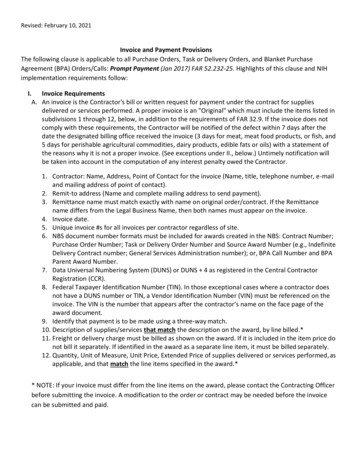
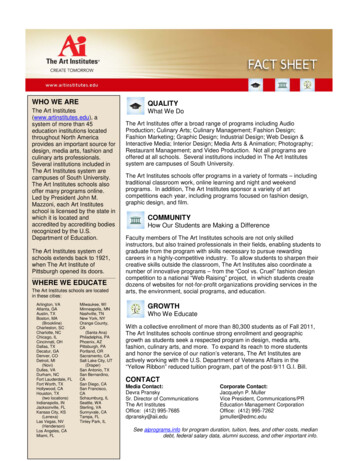
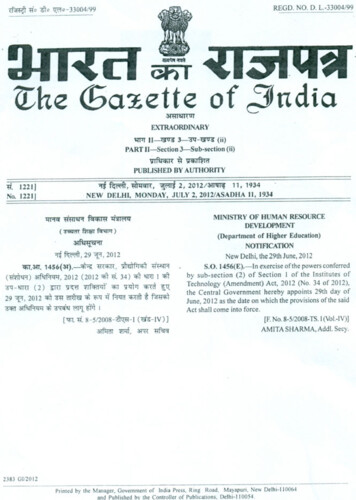
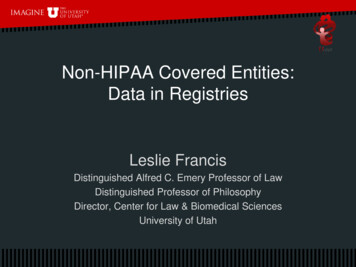
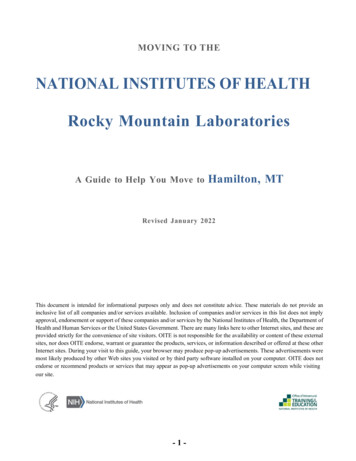


![Office 2010 Professional Plus Com Ativador Serial Keyl [EXCLUSIVE]](/img/61/office-2010-professional-plus-com-ativador-serial-keyl-exclusive.jpg)
